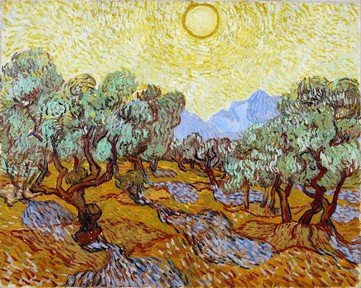Quiz Answer Key and Fun Facts
1. "The Adoration of the Magi" is probably the most painted scene in art history, with hundreds of artists depicting the scene in the Bethlehem manger. I have chosen a 1619 Baroque painting by a leading Spanish artist best known for his portraits. Whose interpretation of the famous scene is pictured here?
2. Our next masterpiece shows another subject depicted by many artists, "The Adoration of the Shepherds". Set ostensibly in the same manger as our first example, I have again selected an early 17th-century work, this time from 1609. It was painted by one of the great Italian masters just a year before he died. Who is the artist?
3. The polyptych, a painting divided into numerous parts, was a popular way for the artist to tell a story, although the method was rather dated by the time this one was produced in the early 1520s. This piece is known as the "Averoldi Polyptych", after the commissioner. It is the work of which artist, the most important member of the Venetian school of the period?
4. Another polyptych, "The Ghent Altarpiece" consists of twelve panels, eight of them hinged and two-sided. Completed in 1432, this is the work of one of the most important Northern Renaissance artists of the period. Who is the Dutch artist?
5. Variations on the "Madonna and Child" theme have been painted by thousands of artists. This 1510 work entitled "The Rest on The Flight into Egypt" is a bit different from normal. Who was the Early Dutch artist who painted this?
6. Known as 'Madonna del Prato' ("Madonna of the Meadow"), this is perhaps the most famous of many paintings of the subject by this artist. The painting from 1506 depicts the Virgin Mary with Christ and John the Baptist as infants. Who is this artist, one of the true greats of the Italian High Renaissance period?
7. Many artists have painted scenes of various stages of the crucifixion. Completed in 1611, this triptych called "The Elevation of the Cross" shows a multitude of men struggling to the raise the cross into position. Which Flemish Baroque Master was the artist?
8. Our next example, simply called "Crucifixion", is a much more stylized scene. Painted between 1455 and 1460, the scene shows Christ on the cross with Mary and Joseph mourning below as weeping cherubims fill the sky behind him. This is the work of which Italian Renaissance painter?
9. "Jesus Appearing to the Magdalene" is a fresco painted between 1437 and 1446, depicting the meeting of Mary Magdalene and the resurrected Christ. The artist was an Early Italian Renaissance painter who was beatified by Pope John Paul II in 1982. Who is this artist?
10. The spectacular 1775 "Ascension" is representative of artistic interpretations of this key biblical story. Our featured work is by an artist better known as a portrait painter. Who is this American artist?
Source: Author
EnglishJedi
This quiz was reviewed by FunTrivia editor
looney_tunes before going online.
Any errors found in FunTrivia content are routinely corrected through our feedback system.
